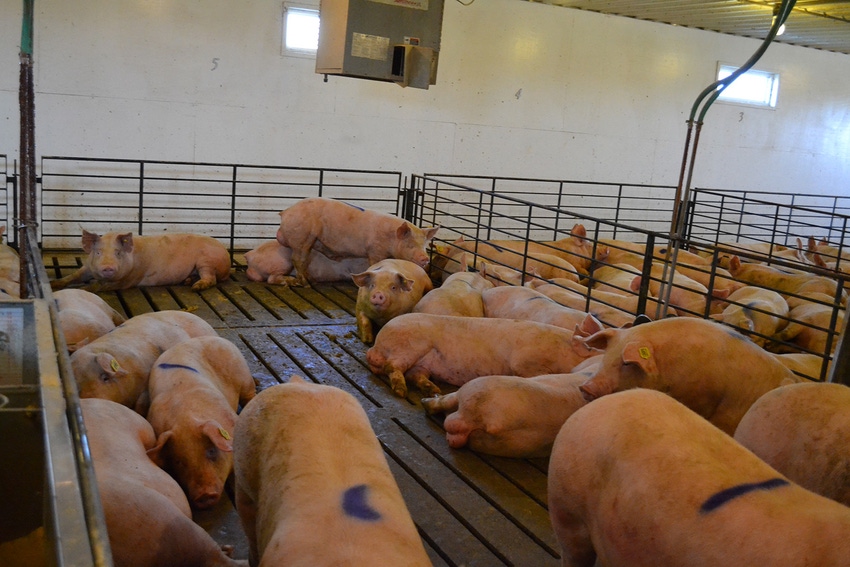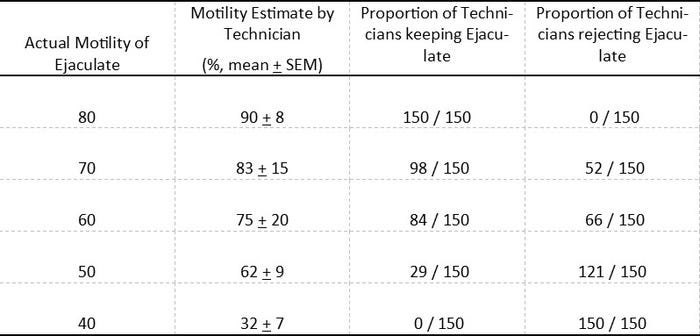Variation in visual estimations of motility by laboratory technicians
Research examines ways to reduce variations among technicians in regards to motility estimates for boar semen.

Estimates of motility are the most common form of semen quality assessments conducted on semen in boar studs. They are used to accept or reject ejaculates for further processing and, often, used to adjust the number of sperm added to insemination doses. Many boar studs rely on visual estimations of motility by laboratory personnel. A field study was conducted in order to determine how much variation exists among technicians that are using this technique. In order to accomplish this, video footage of ejaculates ranging from 40 to 80% motility was sent to 150 different A.I. technicians. Each one was asked to estimate the actual proportion of motile cells in each sample (video segment) and then determine whether they would keep or reject the ejaculate for further processing.
Results from the field study are shown in Table 1.
Table 1: Accuracy and precision of boar semen motility estimates by A.I. laboratory technicians.

The largest variation was observed for the samples that had 60% and 70% motility and, as expected, these also were the samples for which there was the most disagreement among technicians as to whether they should be extended to make insemination doses or discarded without processing. All technicians recommended using the ejaculate with 80% motile sperm but overestimated its true motility by 10%. Similarly, all technicians rejected the ejaculate with only 40% motile sperm but underestimated its true motility by 8%.
The two most important observations from this study are that there is considerable variation among technicians when visual estimations for motility are used to assess semen quality. This probably results in acceptable ejaculates being discarded and unacceptable ones being used to make insemination doses. In addition, it appears that there is a tendency to overestimate ejaculates with high motility which could lead to reductions in motile sperm per insemination doses if motility is used in these calculations. Dilution of neat samples in conjunction with the use of poly-L lysine coated slides; slides with grids for counting; or computer-assisted semen analysis systems are possible ways to reduce variation among technicians with regards to motility estimates for boar semen.
About the Author(s)
You May Also Like





